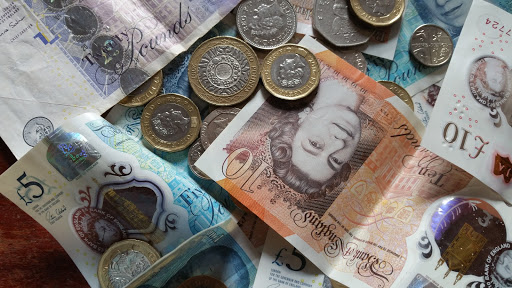The PPI payout deadline is well and truly gone (although it may soon return), but PPI is not going anywhere just yet.
If you’re one of the millions that claimed PPI and were awarded a payout, then good news, you may be able to reclaim the PPI tax that you paid upon your payout.
What is PPI tax? It’s the tax that was automatically deducted from your total PPI payout amount by the government. Most people were not required to pay it, so you might be able to get it back.
In this post, we’ll tell you if you could potentially qualify to reclaim your PPI tax, what will be required from you and how you start the process of making a claim.
Why Was I Taxed on My PPI Payout?
When you received your PPI refund, you were given an 8% annual statutory interest charge on the total amount of the PPI paid out and the extra loan added by the bank to your original loan for each year since you got PPI.
You will find this interest charge on your payout statement. If you can’t see it on your payout statement, you may request a certificate from the firm that managed your PPI payout.
You are likely due a PPI tax refund because the statutory interest was paid to put you back into the position you would have been in if you weren’t mis-sold PPI in the first place. It is considered a savings interest just as if you had earned it on your savings.
So, what does this mean? It means you’re likely to be owed some tax money back into your account.
Am I Owed Tax on My PPI Payout?
If tax was due on your PPI payout, it would have likely been automatically deducted by the firm that paid out for your PPI. It was deducted at the basic rate of 20% before you received your PPI payout.
The personal savings allowance launched back in April 2016. This allowed basic-rate taxpayers to earn up to £1,000 of savings a year interest tax-free. Higher-rate taxpayers get £500 a year tax-free, and additional-rate taxpayers get £0.
So, because the tax paid on your payout is deemed as savings interest, those that had a payout after April 2016 can now reclaim PPI tax.
How Much PPI Tax Can I Reclaim?

Photo by Alaur Rahman from Pexels
A simple way to calculate this is to take the full amount of statutory interest earned and deduct 20%. So, if you earned £200 in statutory interest, you paid £40 of tax.
If you had a large payout, you could be entitled to up to a £1,000 PPI tax refund. The above is a rough calculation, and there are many factors that could affect the amount you can reclaim, including how many years ago your PPI was taken out.
What Are the Requirements to Reclaim Tax Paid on My PPI Payout?
Your PPI payout was taxed in the year it was paid to you. So, even if you took out a PPI policy in 2009 and it was repaid in 2017, it is the latter tax year that is used to reclaim PPI tax.
If you were a non-taxpayer (earning less than £12,500 per annum) in the year your PPI was paid out, you can reclaim all the tax that you paid.
If the statutory interest you earned pushed you over the £12,500 threshold, then you will only be able to reclaim part of the tax you paid on your PPI.
For everybody else earning over the income threshold, the savings interest allowance introduced in April 2016 is an additional amount you are entitled to tax-free, but only on the savings interest.
Here is the savings interest allowance for each individual in line with their income:
- Basic 20% rate taxpayers (£12,500-£50,000) = £1,000 interest per year tax free.
- Higher 40% rate taxpayers (£50,000-£150,000) = £500 interest per year tax free.
- Top 45% rate taxpayers (£150,000+) = £0 personal savings allowance.
You can claim all your PPI tax back if your interest earned from savings and PPI statutory interest is less than your personal savings allowance.
Those whose combined amount pushed them over the threshold should only pay tax on the amount above that threshold. For example:
- John is a 20% basic-rate taxpayer.
- In 2018, he earned £300 interest on his savings.
- He then got a PPI payout, which included statutory interest, totalling at £900.
- His total interest for that year is £1,200, which is £200 over his personal savings allowance of £1,000.
- He should only have paid tax on that £200 at a rate of 20%, which would be £40.
- The tax automatically taken off his PPI payout was £180 (£900 minus 20%).
- He is entitled to get back a total of £220 (£40 plus £180).
Who Can’t Reclaim PPI Tax?
Unfortunately, you can only claim tax back on your PPI going back four tax years, including the current tax year. In other words, you can only go back as far as the 2016/17 tax year.
So, if you had a PPI payout before April 2016, you cannot reclaim PPI tax.
How Do I Reclaim the Tax on My PPI Payout?
Ok, now we know the basic calculation and what figure to expect (roughly), you may be wondering how do you actually reclaim PPI tax?
If you think you qualify for a PPI reclaim, you can use an R40 “Claim a refund of Income Tax deducted from savings and investment” form. For those living overseas, you will need an R43 form. It’s best to fill out the online version of the form, as the UK government now prefers everything to be done online, and it will speed up the process.
You can start the process now by visiting HMRC.
Tips for Filling Out the Forms

Photo by Gabrielle Henderson on Unsplash
The forms can be overwhelming and confusing. Some people may want to ask a relative or close friend to help them out.
Here are some general tips to help you fill out the form and avoid any complications:
- Check out the official guidance for filling out an R40 form.
- If you’re using the postal form, don’t forget to write your name and address, as well as the date of your PPI payout at the top of the form.
- Ensure your personal details in “Box 1” are correct. Check and check again.
- Your income details can be found on your old P45 or P60 form that should have been given to you by your employer. Make sure you use the right P45 or P60 form from the tax year you’re claiming.
- Make sure you include on the form any other taxable income that you received in the tax year (including state pension).
- Thoroughly check all the boxes and include all the information you have. Some information required won’t apply to you.
- You will need to fill out multiple R40 forms if you have numerous PPI payouts.
If you are struggling to fill out the form, you can always call HMRC for help on 0300 200 3300.
Note to Basic-Rate Taxpayers
If your earnings in the year of your PPI payout were close to the threshold (£50,000), your statutory interest might just push you into the higher tax bracket. That would reduce your personal savings allowance and make you pay 40% tax on the amount over that threshold.
Note to Higher or Additional-Rate Taxpayers
You will need to make sure that you declare the statutory interest to HMRC so that they can pay the correct amount of tax. If your payout was after 2016, you are entitled to £500 interest tax-free, so you may have tax to reclaim. Any interest over £500 is taxed at 40% for you.
How Long Will It Take to Receive My Refund?
It appears that the typical period for receiving a PPI tax refund is around six to eight weeks. This will depend on how quickly HMRC is processing claims and is likely to change frequently.